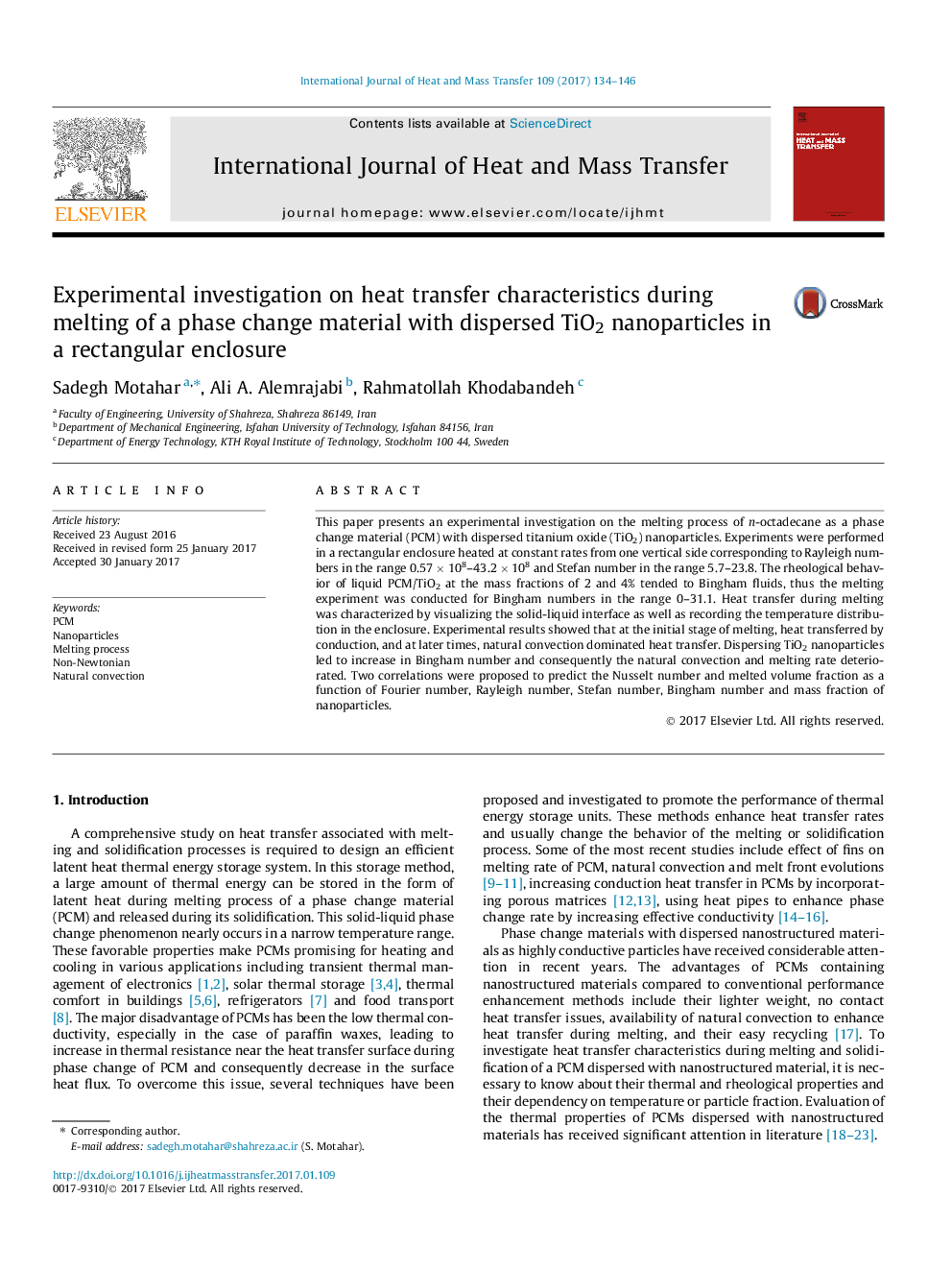| Article ID | Journal | Published Year | Pages | File Type |
|---|---|---|---|---|
| 4994472 | International Journal of Heat and Mass Transfer | 2017 | 13 Pages |
Abstract
This paper presents an experimental investigation on the melting process of n-octadecane as a phase change material (PCM) with dispersed titanium oxide (TiO2) nanoparticles. Experiments were performed in a rectangular enclosure heated at constant rates from one vertical side corresponding to Rayleigh numbers in the range 0.57Â ÃÂ 108-43.2Â ÃÂ 108 and Stefan number in the range 5.7-23.8. The rheological behavior of liquid PCM/TiO2 at the mass fractions of 2 and 4% tended to Bingham fluids, thus the melting experiment was conducted for Bingham numbers in the range 0-31.1. Heat transfer during melting was characterized by visualizing the solid-liquid interface as well as recording the temperature distribution in the enclosure. Experimental results showed that at the initial stage of melting, heat transferred by conduction, and at later times, natural convection dominated heat transfer. Dispersing TiO2 nanoparticles led to increase in Bingham number and consequently the natural convection and melting rate deteriorated. Two correlations were proposed to predict the Nusselt number and melted volume fraction as a function of Fourier number, Rayleigh number, Stefan number, Bingham number and mass fraction of nanoparticles.
Related Topics
Physical Sciences and Engineering
Chemical Engineering
Fluid Flow and Transfer Processes
Authors
Sadegh Motahar, Ali A. Alemrajabi, Rahmatollah Khodabandeh,
